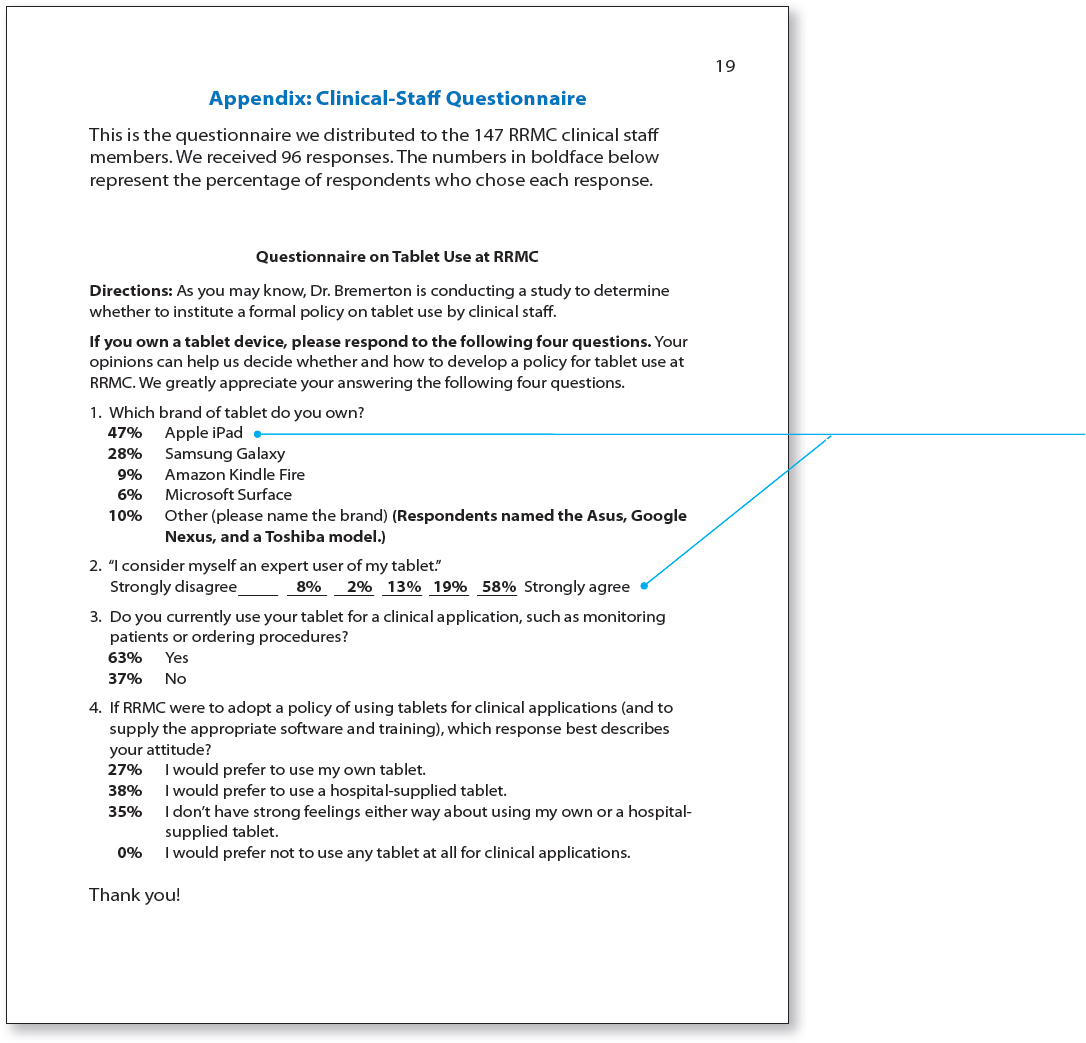Sample Recommendation Report
Printed Page 487-511
Sample Recommendation Report
The following example is the recommendation report on the tablet project proposed in Chapter 16. The progress report for this project appears in Chapter 17.
Transmittal “letters” can be presented as memos.
The writers include their titles and that of their primary reader. This way, future readers will be able to readily identify the reader and writers.
The subject heading indicates the subject of the report (the tablet study at RRMC) and the purpose of the report (recommendation report).
The purpose of the study. Notice that the writers link the recommendation report to the proposal, giving them an opportunity to state the main tasks they carried out in the study.
The methods the writers used to carry out the research.
The principal findings: the results and conclusions of the study. Notice that the writers state that they cannot be sure whether the technical information they have found is accurate. Is it okay to state that you are unsure about something? Yes, as long as you then propose a way to become sure about it.
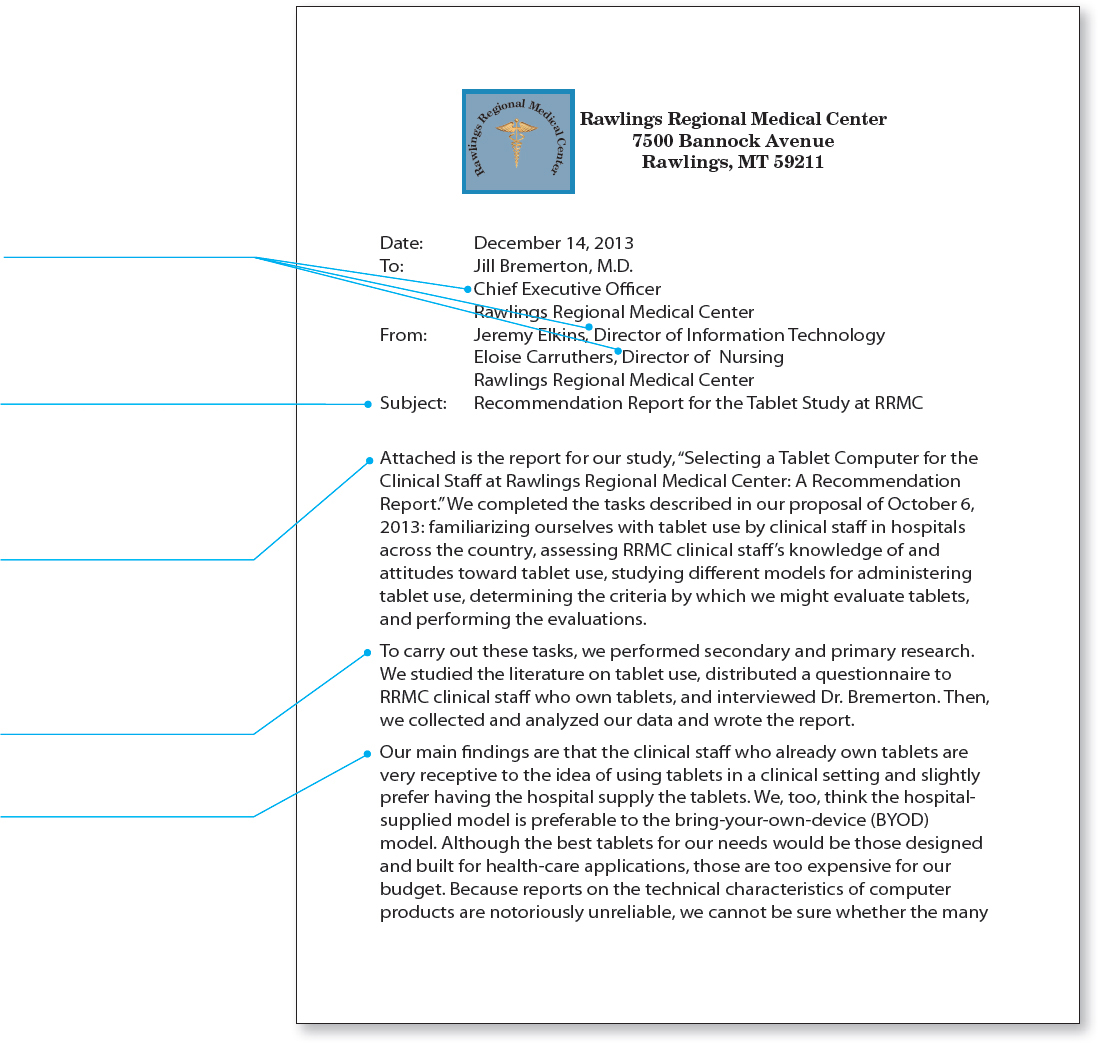
The major recommendation. The writers ask their supervisor if she will reconsider whether the hospital can afford tablets specifically designed for health-care environments. That’s not insubordination. Just be polite about it.
A polite offer to participate further or to provide more information.
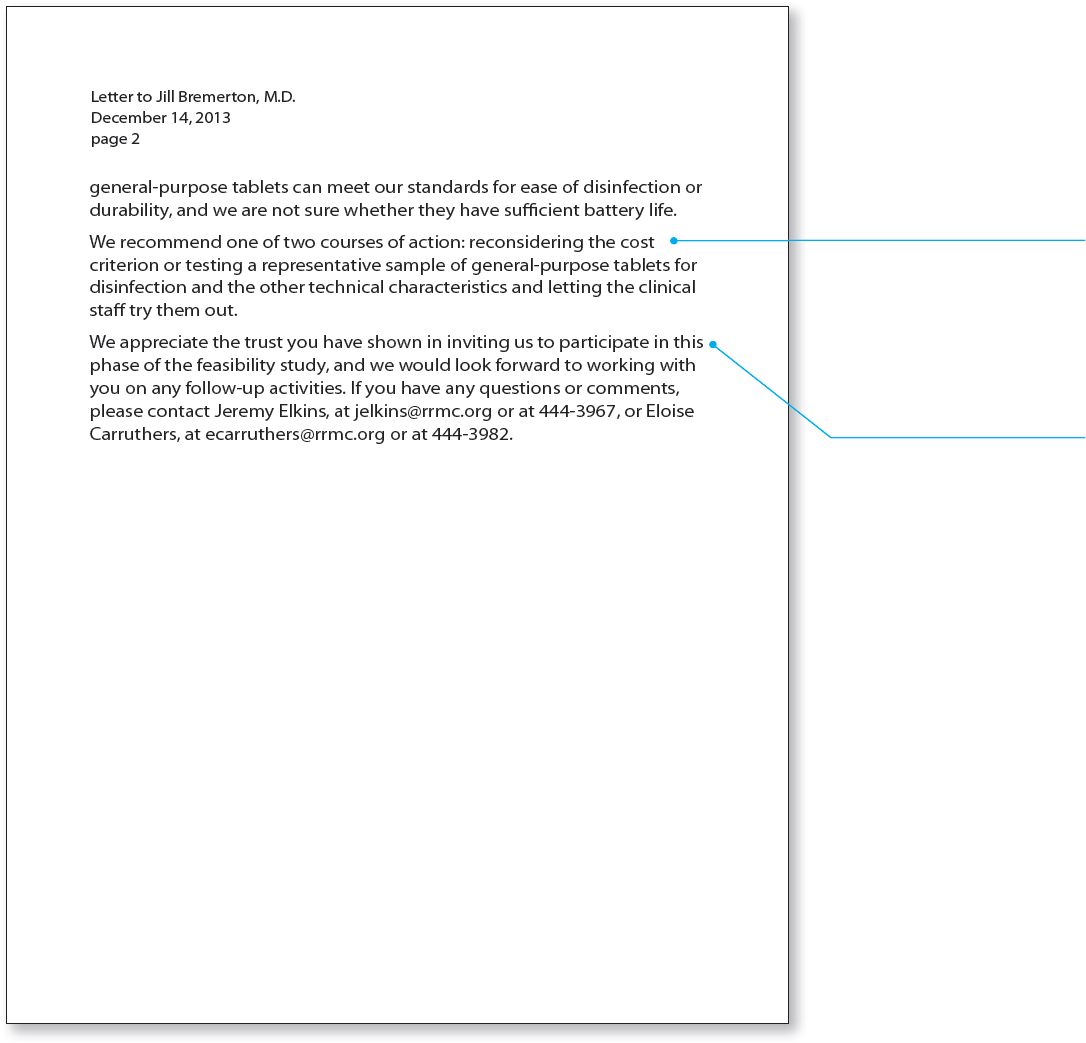
A good title indicates the subject and purpose of the document. One way to indicate the purpose is to use a generic term—such as analysis, recommendation, summary, or instructions—in a phrase following a colon. For more about titles, see "Writing Clear, Informative Titles."
The names and positions of the principal reader and the writers of the document.
The date the document was submitted.
The name or logo of the writers’ organization often is presented at the bottom of the title page.

In the abstract, the title of the report is often enclosed in quotation marks because the abstract might be reproduced in another context (such as in a database), in which case the report title would be the title of a separate document.
Abstracts are often formatted as a single paragraph.
The background and purpose of the report.
The methods.
The major findings.
Note that the writers provide some technical information about tablet use, clinical staff attitudes, and technical characteristics of tablets.
The major recommendations.
A keywords list ensures that the report will appear in the list of results of an electronic search on any of the terms listed.

Note that the typeface and design of the headings in the table of contents mirror the typeface and design of the headings in the report itself.
In this table of contents, the two levels of headings are distinguished by type style (boldface versus italic) and indentation.
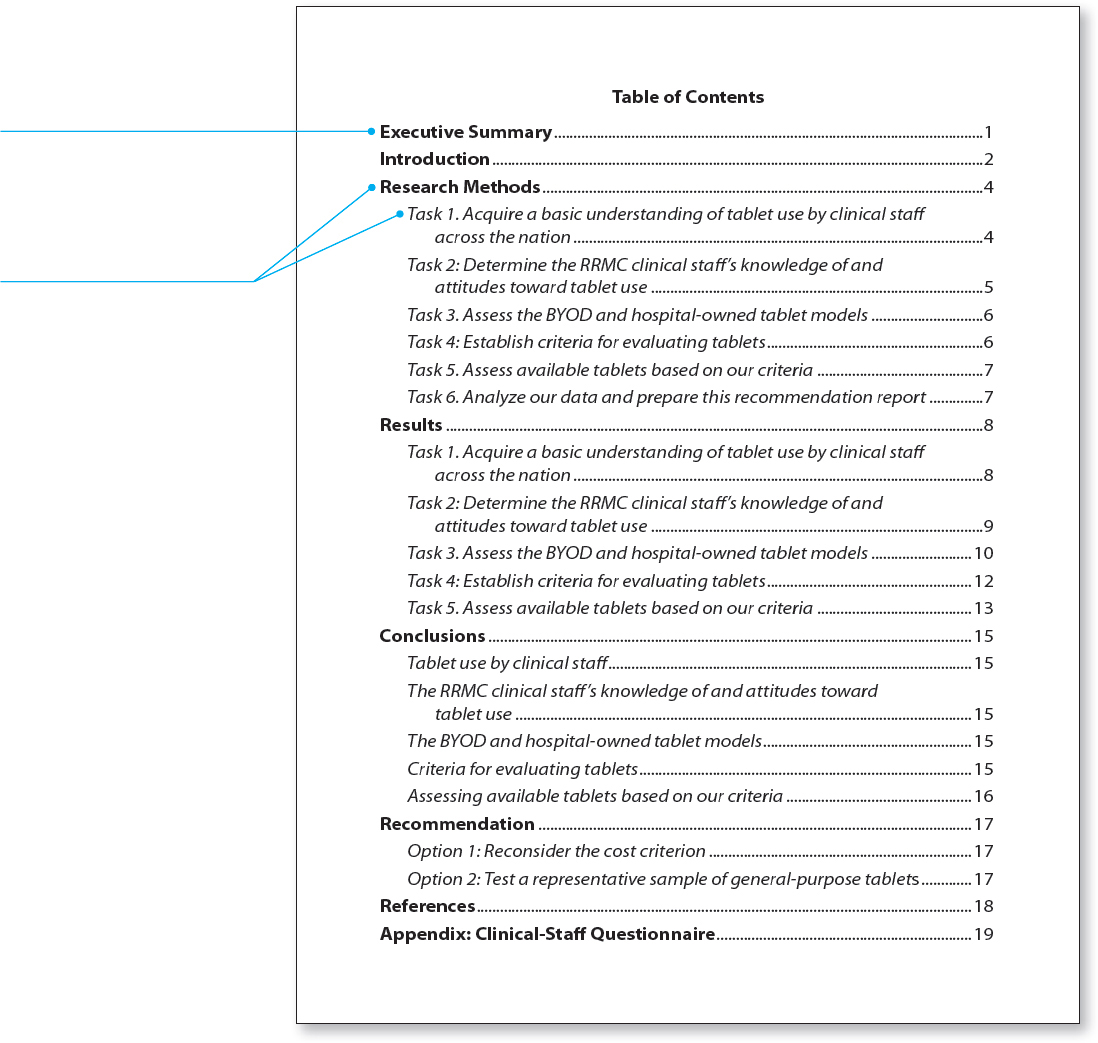
The executive summary describes the project with a focus on the managerial aspects, particularly the recommendation. Note the writers’ emphasis on the problem at RRMC.
Here the writers present a brief statement of the subject of their report.
The background of the feasibility study that Dr. Bremerton is funding.
A brief statement of the methods the writers used to carry out their research. Note that throughout this report the writers use the active voice (“We studied the literature . . .”). See Ch. 10 for more on the active voice. Note, too, that the discussion of the methods is brief: most managers are less interested in the details of the methods you used than in your findings.
Findings are the important results and conclusions of a study.
Note that the writers use the word recommend. Using key generic terms such as problem, methods, results, conclusions, and recommendations helps readers understand the role that each section plays in the document.
Because the executive summary is the report element addressed most directly to management, the writers make clear why they prefer looking again at whether the hospital can afford to purchase health-care-specific tablets.
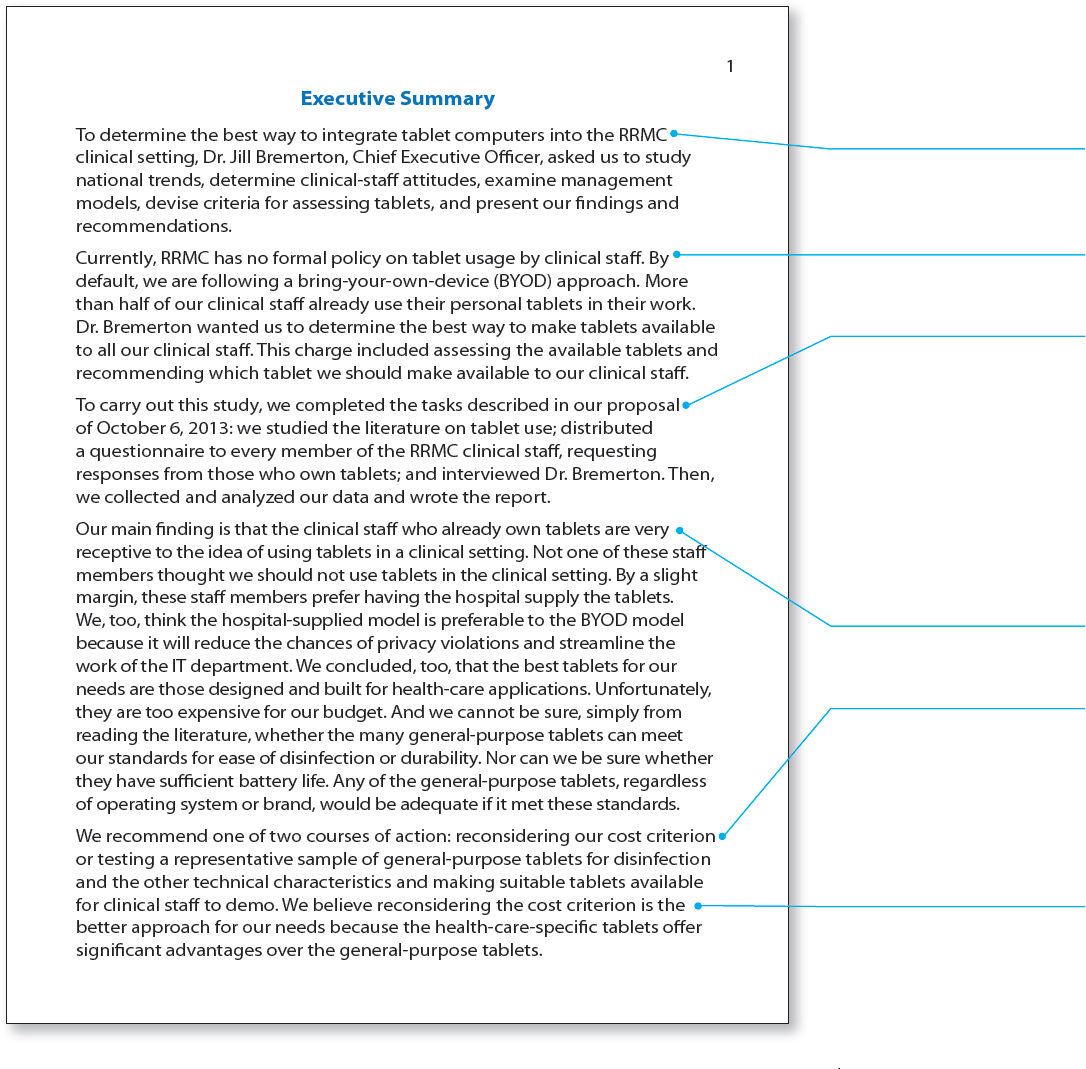
Some organizations require that each first-level heading begin on a new page.
A brief statement of the context for the report.
Note that the word currently is used to introduce the background of the study: the current situation is unsatisfactory for several reasons.
A formal statement of the task the committee was asked to perform. The writers paraphrase from the memo Dr. Bremerton gave them. Often in technical communication, you will quote or paraphrase words your reader wrote to you. This practice reminds the reader of the context and shows that you are carrying out your tasks professionally.
The writers incorporate a brief overview of their methods into the list of tasks.
The writers devote two paragraphs to their principal findings. The introduction can present the major findings of a report; technical communication is not about drama and suspense.

Notice the writers’ use of the phrase “we recommend.” Repeating key terms in this way helps readers understand the logic of a report and concentrate on the technical information it contains.
An advance organizer for the rest of the report.
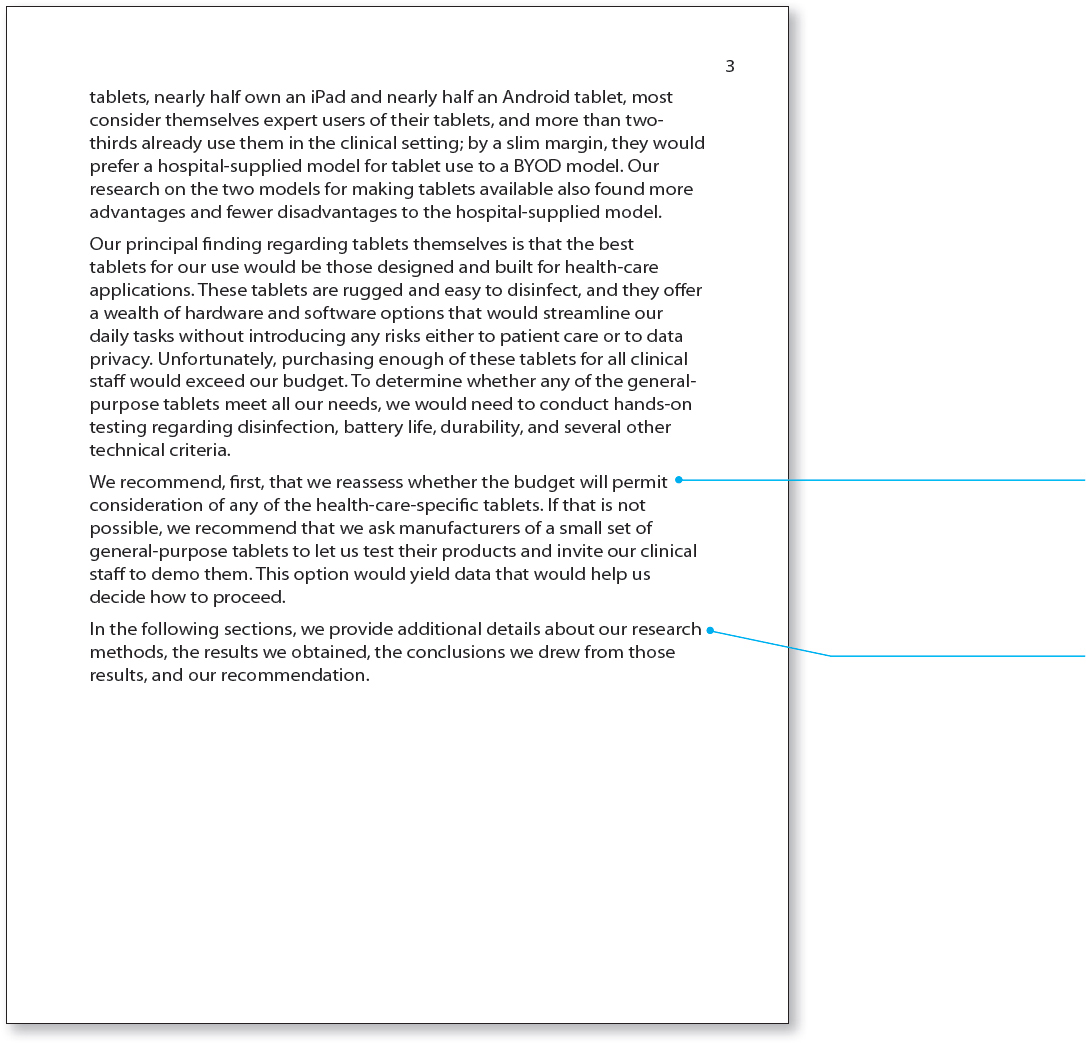
The writers use the same task organization as in the proposal and the progress report.
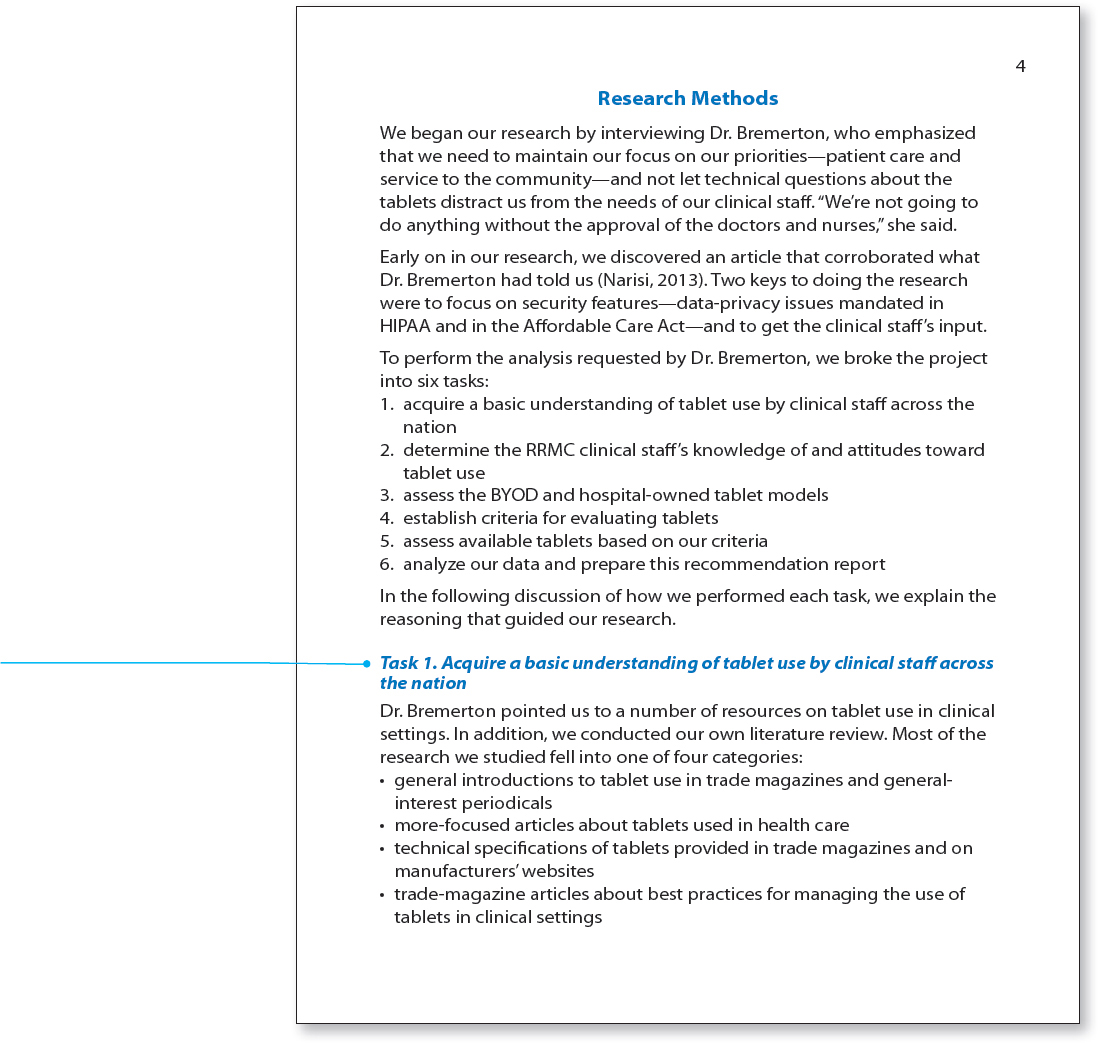
By stating that they know that their sources are a mixture of different kinds of information, not all of which is equally useful for every kind of question that needs to be answered, the writers suggest that they are careful analysts.
The writers carefully explain the logic of their methods. Do not assume that your readers will automatically understand why you did what you did. Sometimes it is best to explain your thinking. Although technical communication contains a lot of facts and figures, like other kinds of writing it relies on clear, logical arguments.
As discussed in "Conducting Primary Research," some questions will misfire. Therefore, it is smart to field-test a questionnaire before you distribute it.
Including a page number in the cross reference to the appendix is a convenience to the reader. When you do so, remember to add the correct page number after you determine where the appendix (or the several appendixes) will appear in the report.
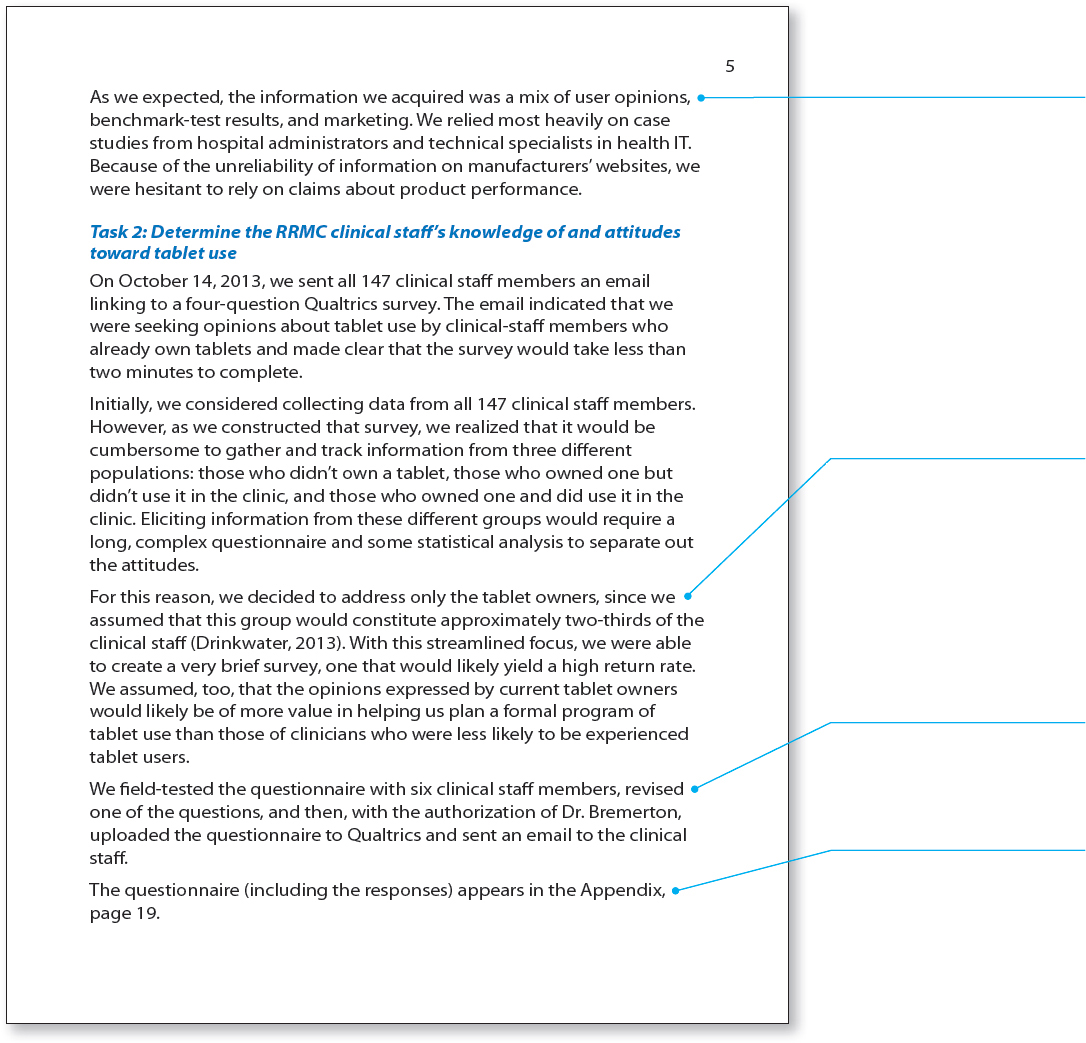
Note that the writers present their references to their sources throughout the report.
Here, again, the writers explain the logic of their methods. They decided to rely on the experiences of hospital administrators. This approach will likely appeal to Dr. Bremerton.
Often you will begin your project with a cost criterion: your recommended solution must not cost more than a certain amount.
The writers present just enough information about the technologies to help the reader understand their logic. Writers sometimes present too much information; include only as much as your readers need to be able to follow your report.
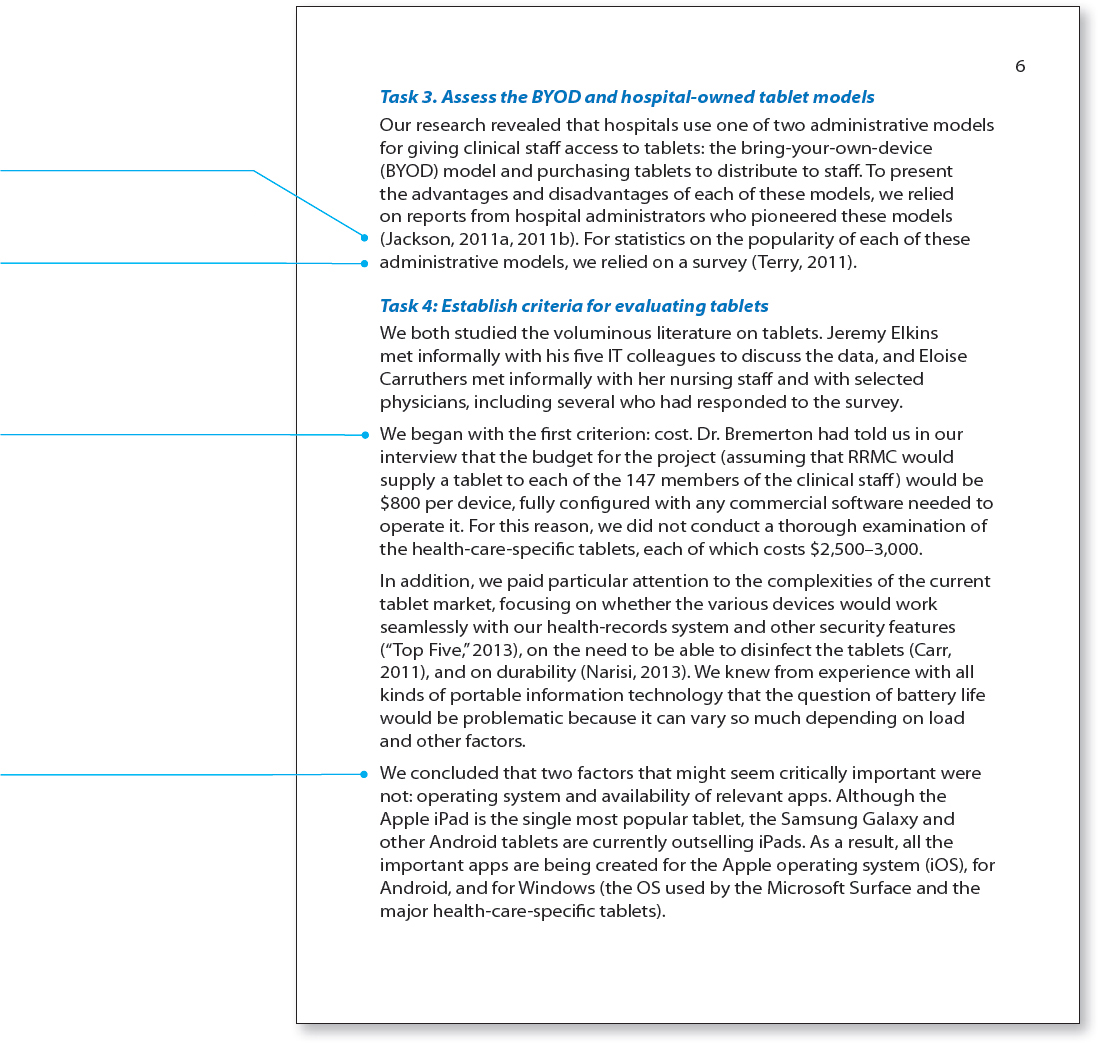
Because analyzing their data and writing this report is part of the study, it is appropriate to include it as one of the steps. In some organizations, however, this task is assumed to be part of the study and is therefore not presented in the report.
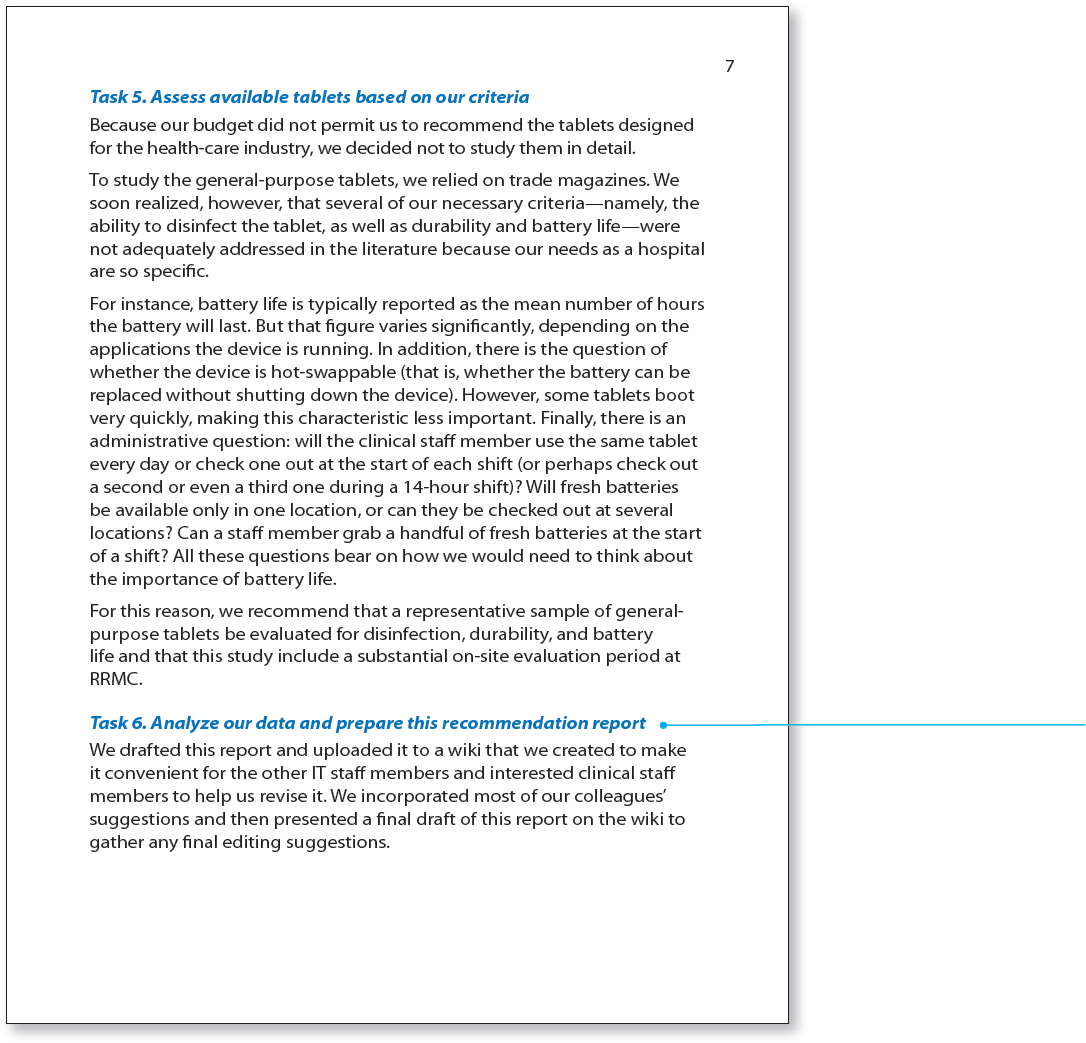
The writers present an advance organizer for the results section.
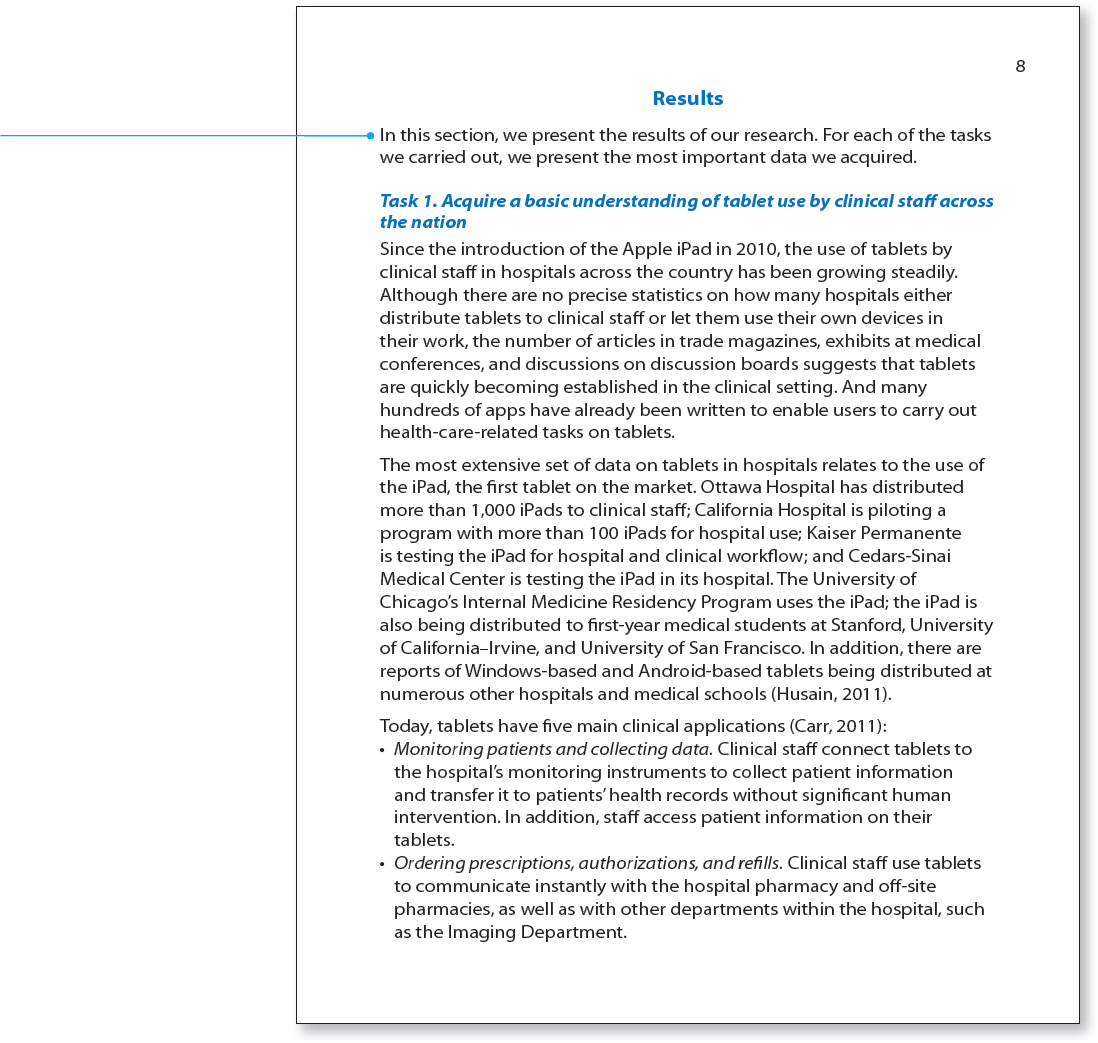
The writers continue to use the task structure that they used in the methods section.


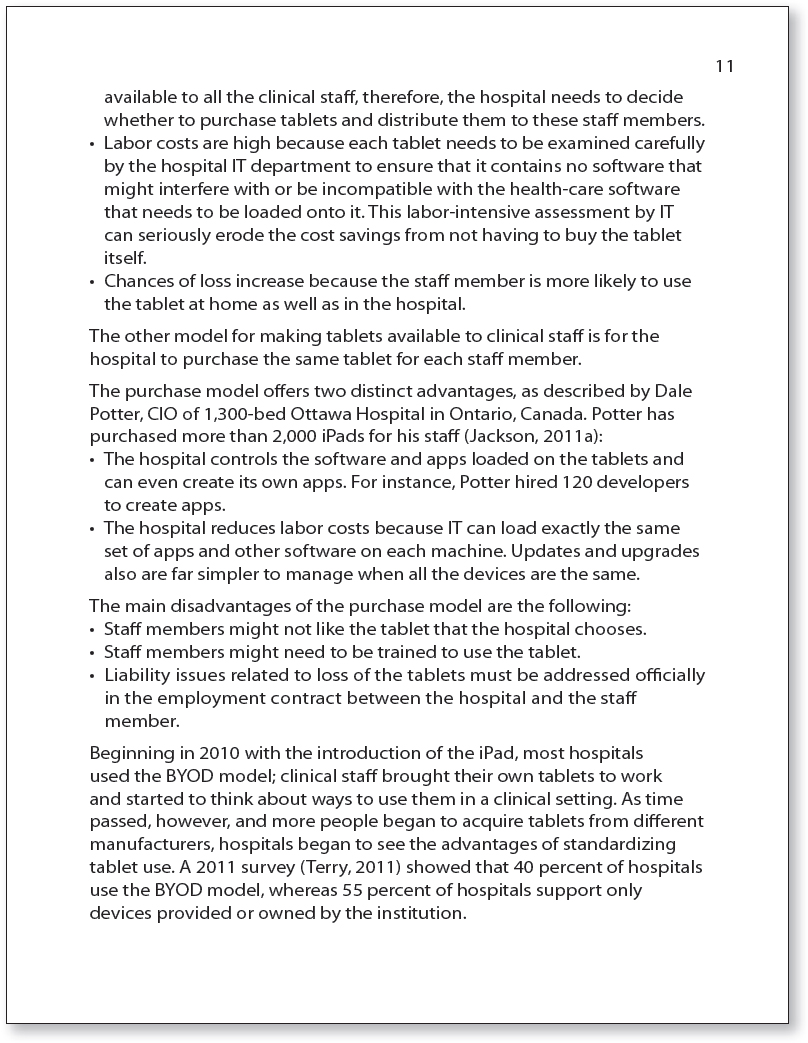
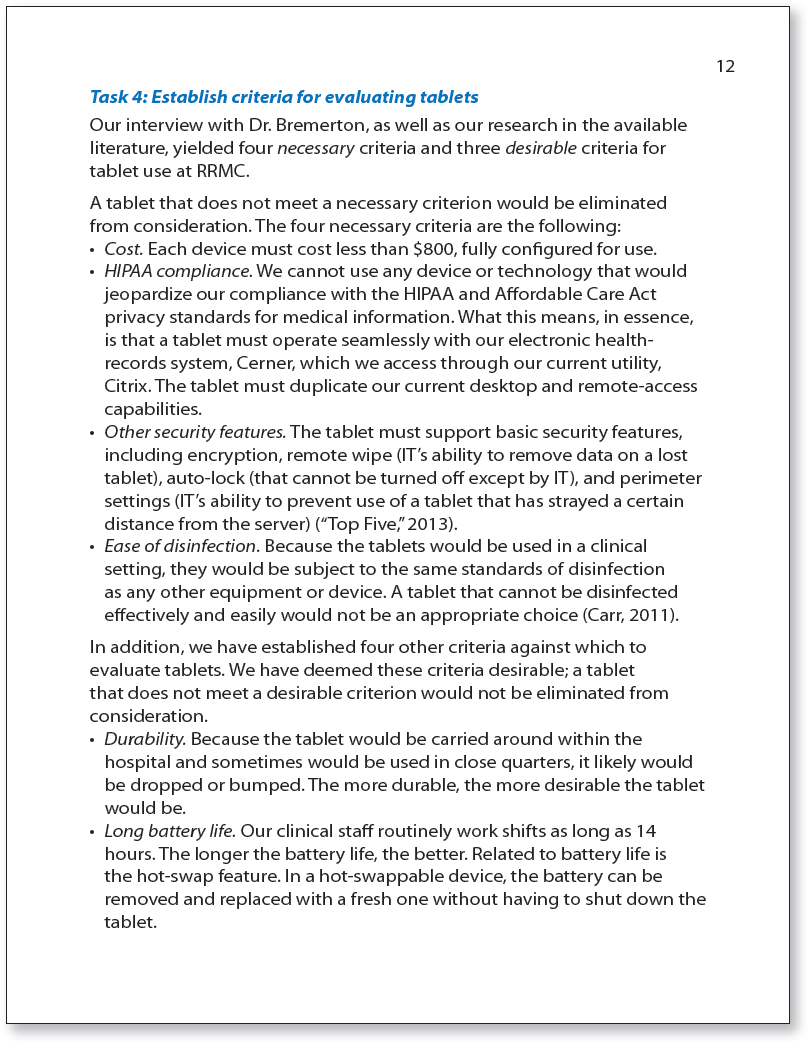

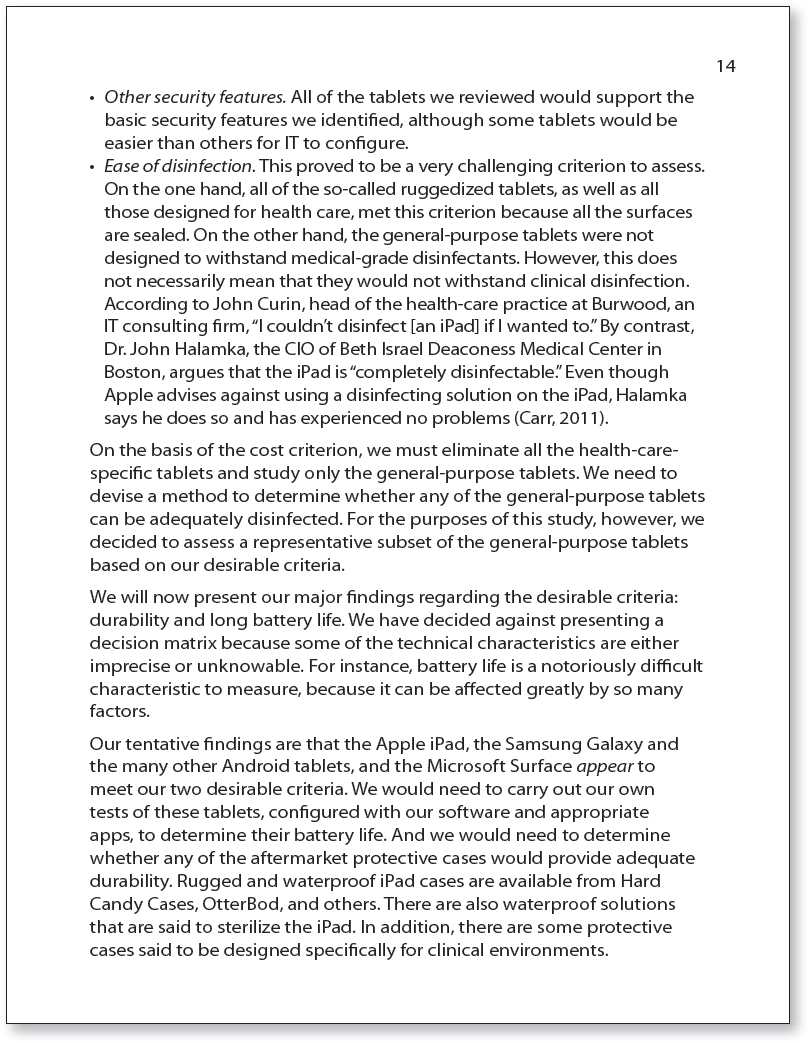
The function of a conclusion is to explain what the data mean. Here the writers explain how their results can help their readers determine how to proceed with the tablet study. Notice that a conclusion is not the same as a recommendation (which explains what writers think should be done next).
The writers present an advance organizer for the results section.
At this point in the report, the writers have decided to abandon the “task” labels. Their thinking is that they are focusing less on what they did and more on the meaning of the information they gathered. However, they retain the headings that help readers understand the topic they are discussing.

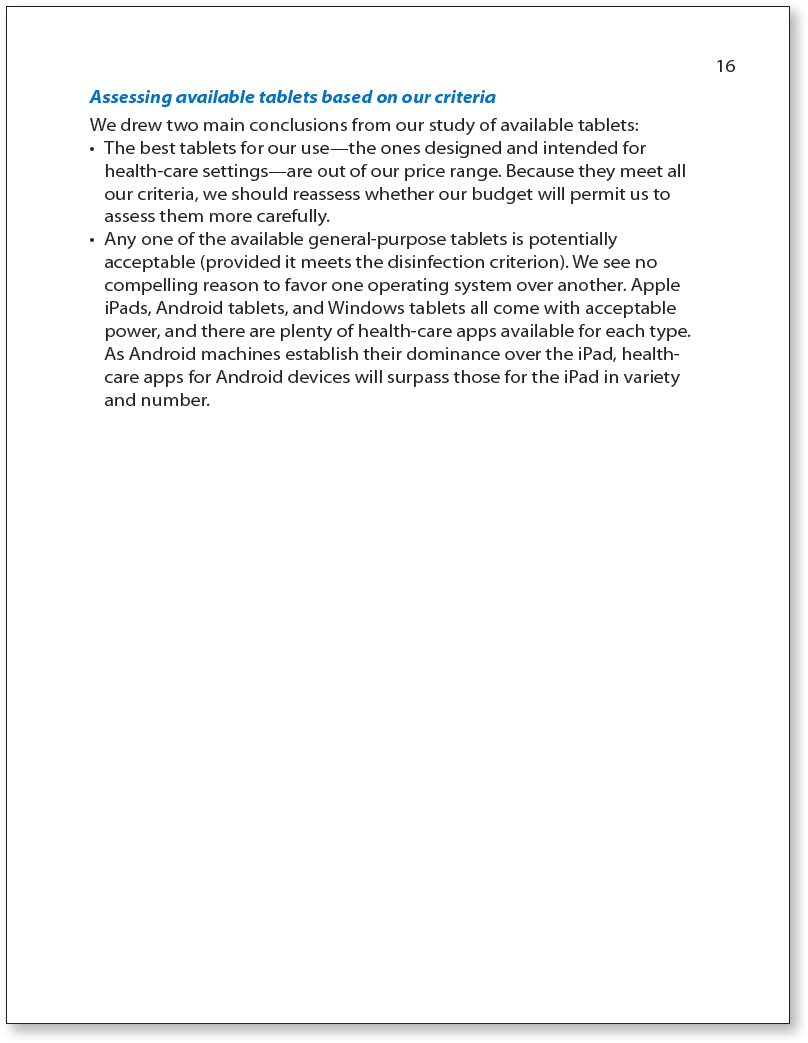
This recommendation states explicitly what the writers think the reader should do next. Note that they are sketching in ideas that they have not discussed in detail but that might interest their readers.

This list of references is written according to the APA documentation style, which is discussed in Appendix, Part B.
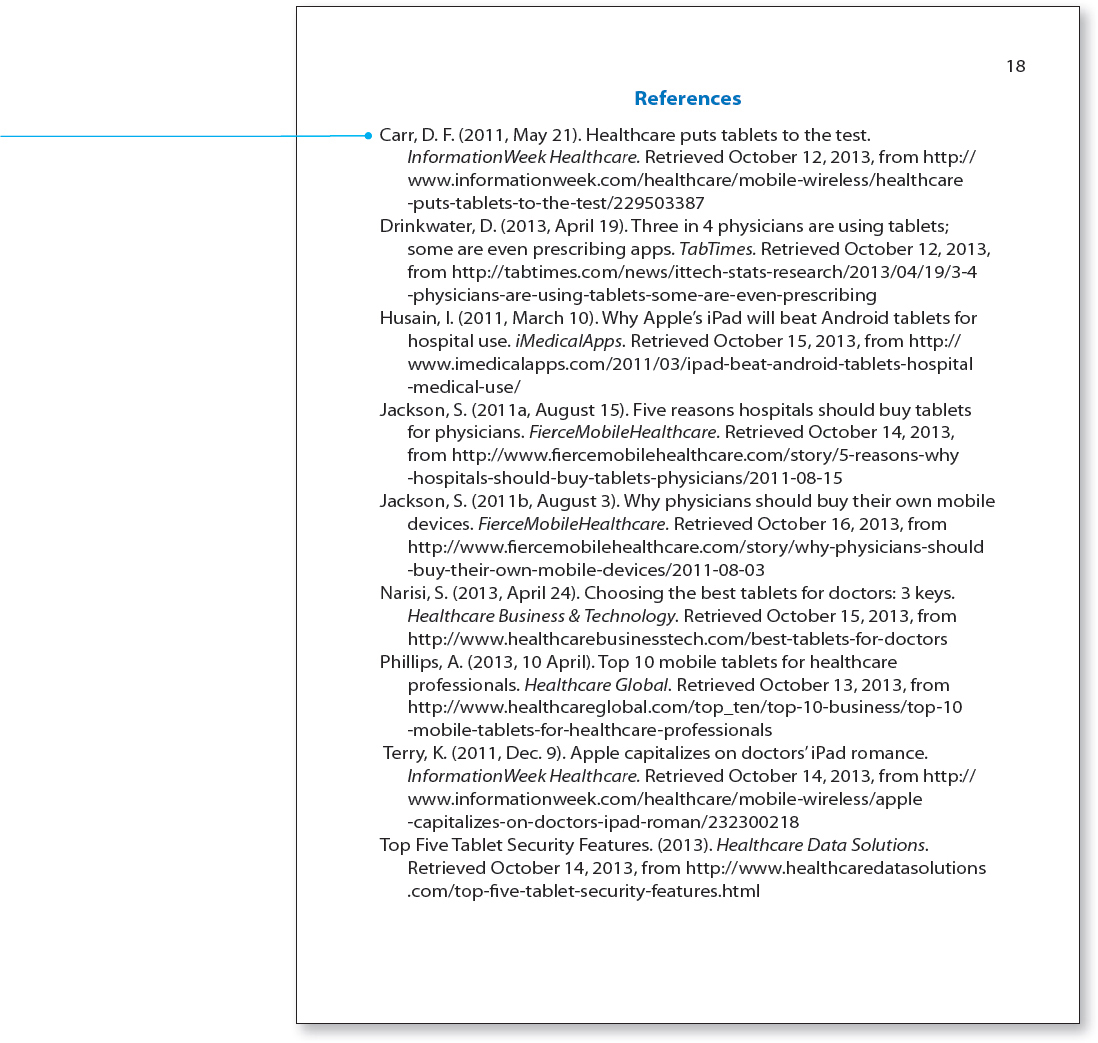
Presenting the percentage data in boldface after each question is a clear way to communicate how the respondents replied. Although most readers will not be interested in the raw data, some will.
